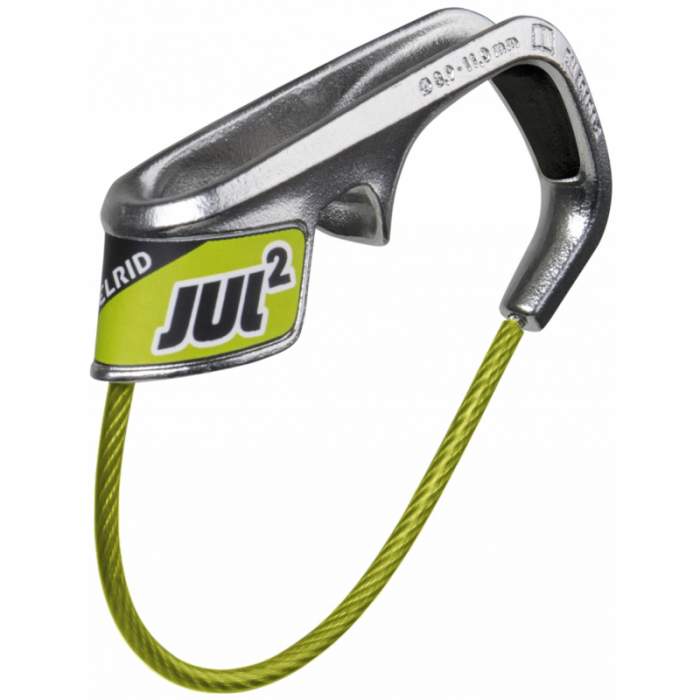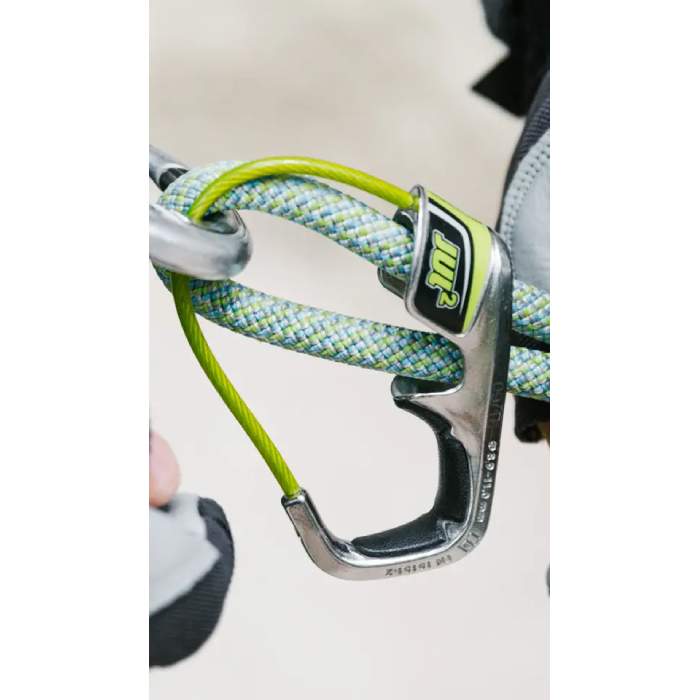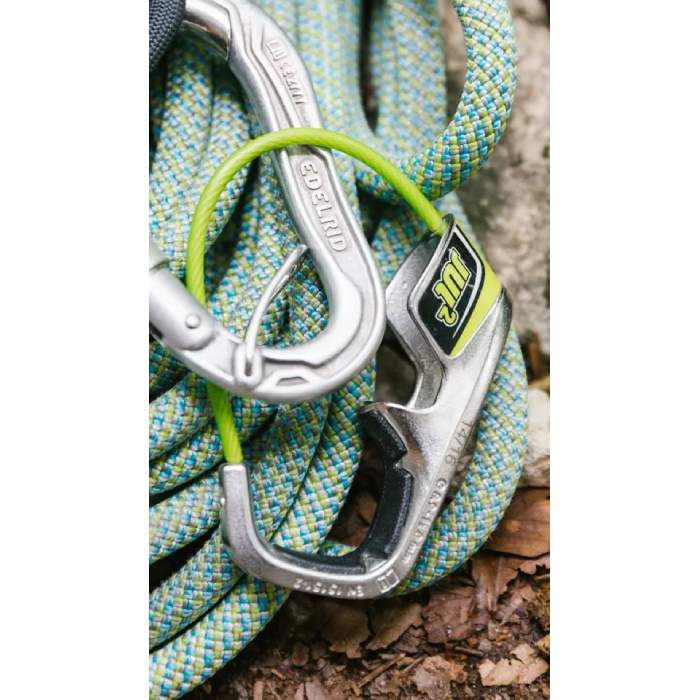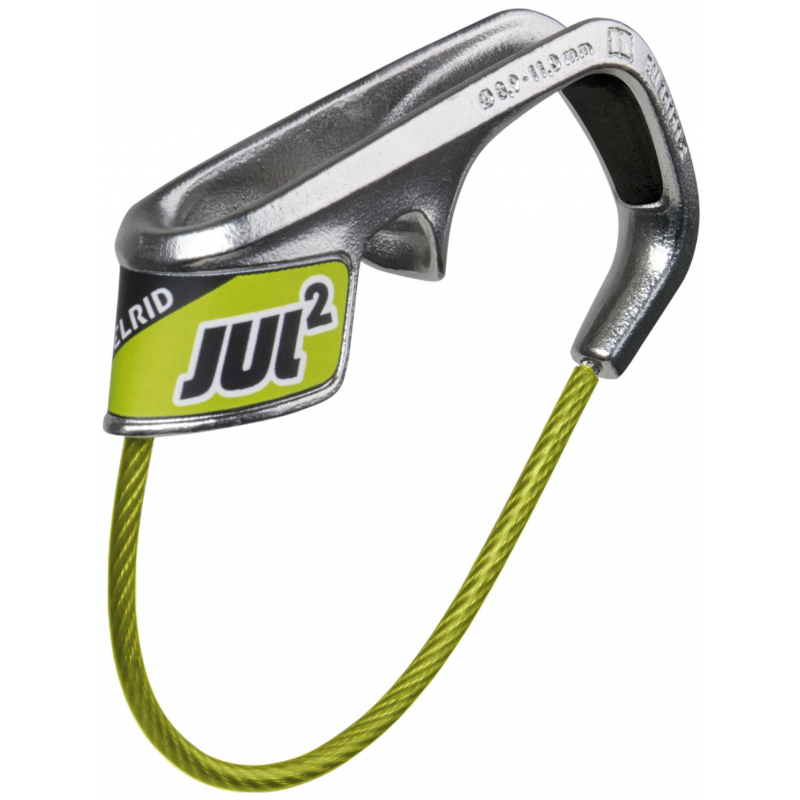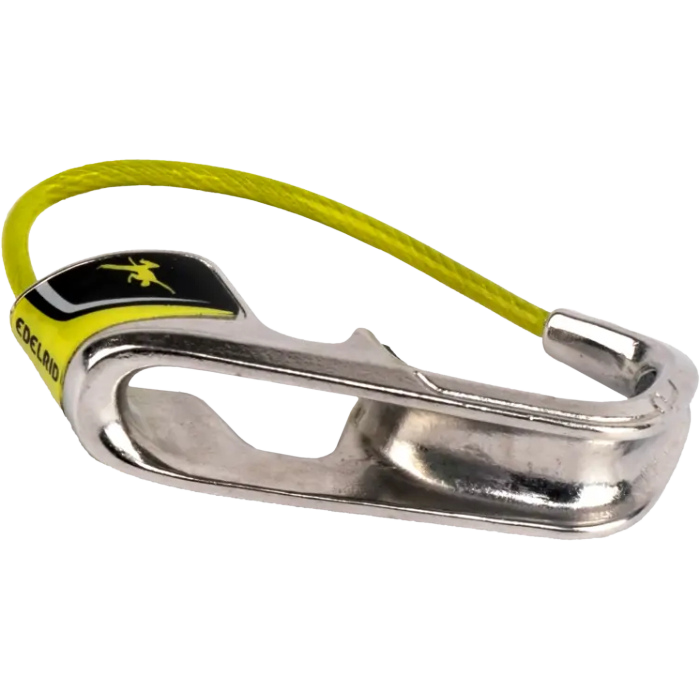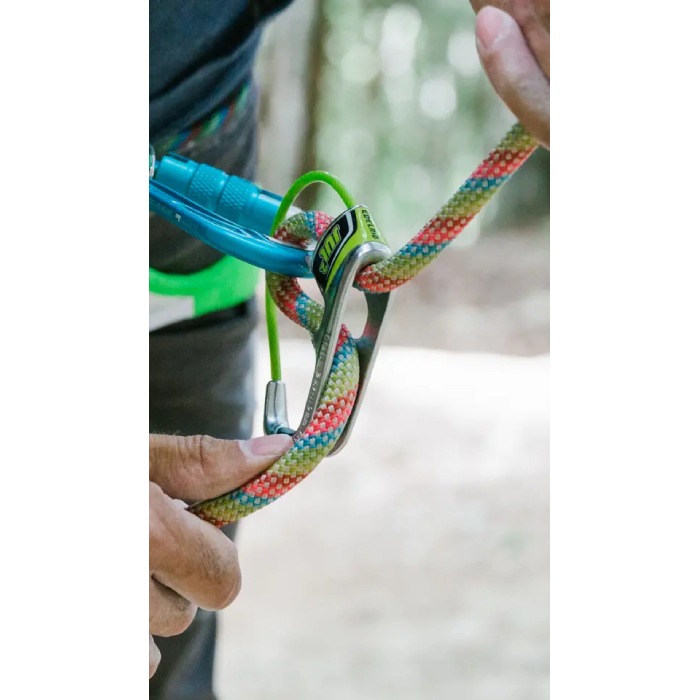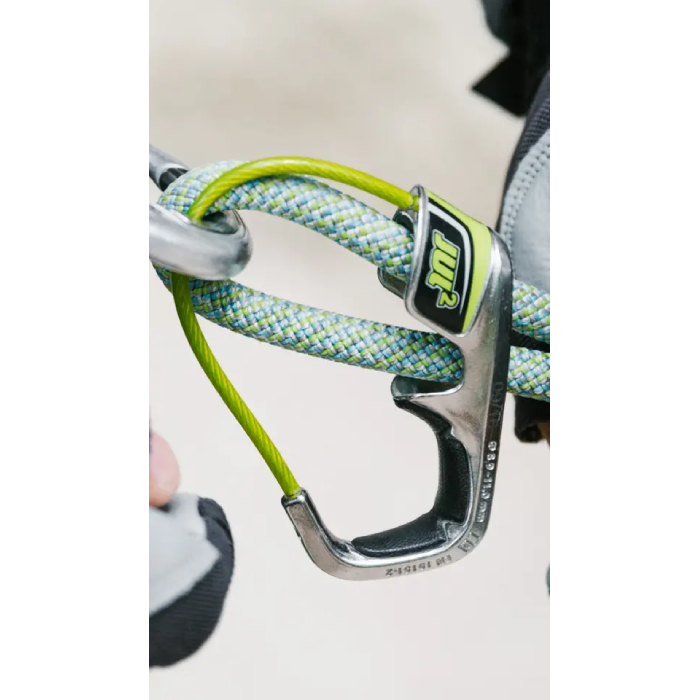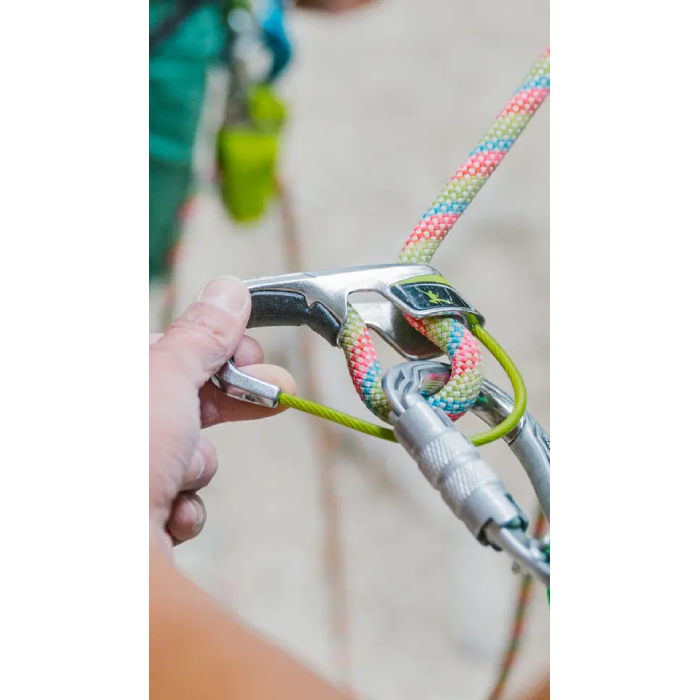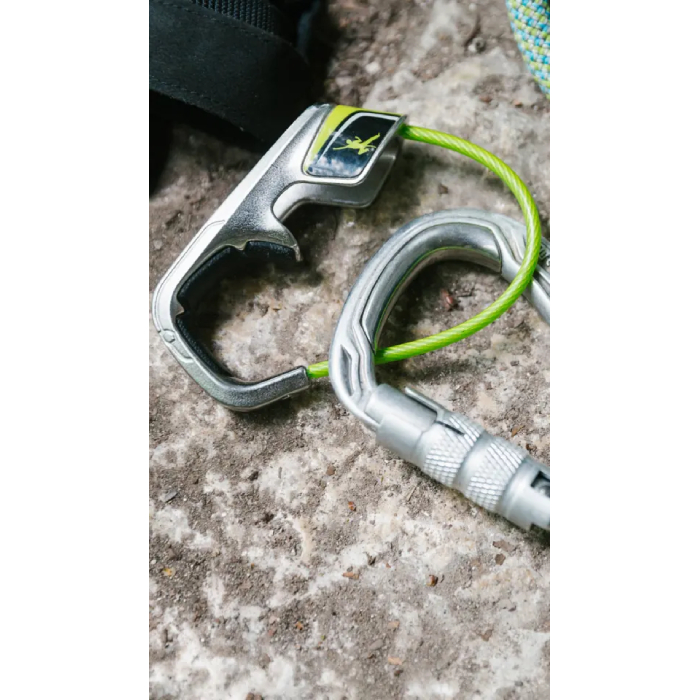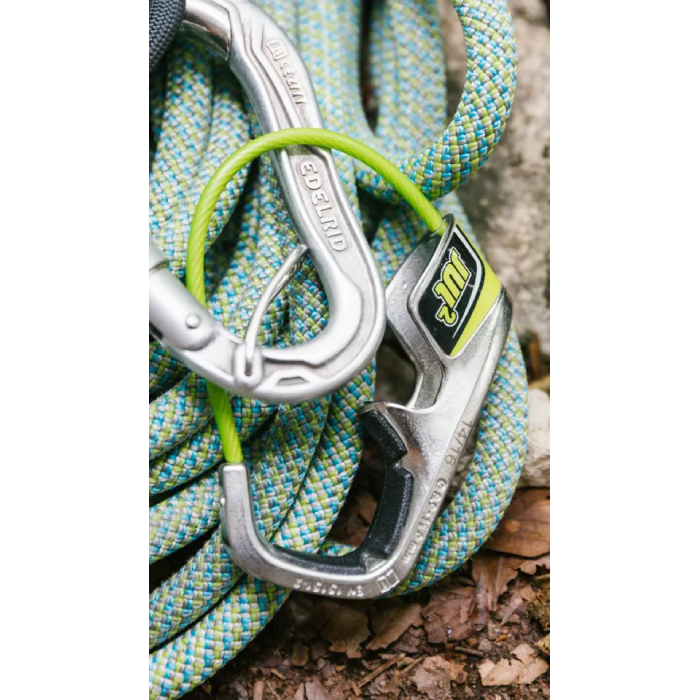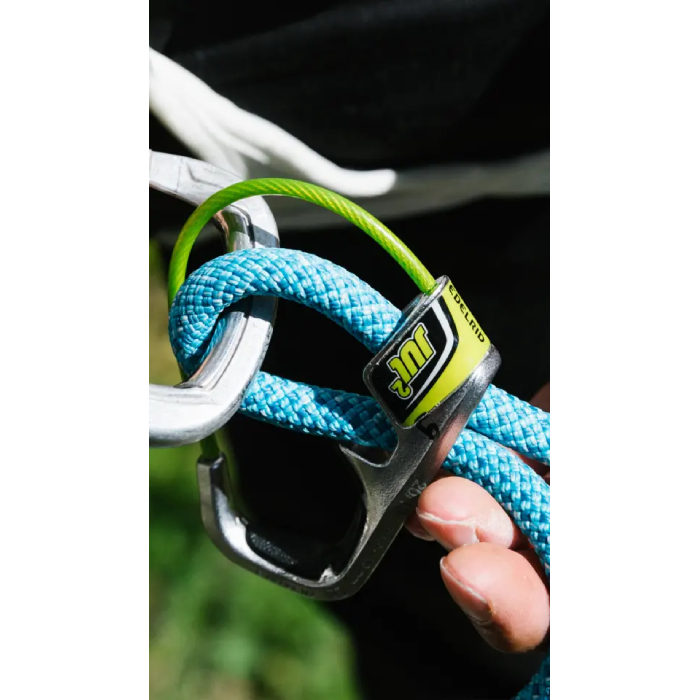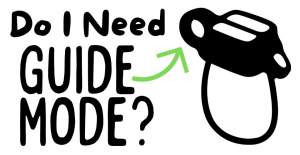Jul²
Description
Innovative belay device with high braking performance for single ropes. The optimized Mega Jul geometry ensures easy and secure belaying even with thicker ropes.
Tough core material of abrasion-resistant stainless steel.
Optimized geometry ensures easy operation even for beginners.
High braking performance assists the belayer with leader falls.
Rope can be paid out faster to a leader by holding the device in the “open” position with the thumb.
Perfect handling, even for ropes with a larger diameter.
Retail price
When you click a link below and then checkout online, no matter what you buy (climbing gear or not), we get a small commission that helps us keep this site up-to-date. Thanks!

Device Type  Device TypeTubeThe most commonly used belay type also called an “ATC” or “tuber.” Other than a distinction between other belay device types, “Tube” is a rarely used term, most climbers just assume you're talking about this style when they refer to your "belay device." 
Figure 8Mostly used in rescue, canyoneering, tactical, work safety, or by old school climbers and rappellers. One reason they went out of popularity with recreational climbers is because they tend to create twists in the rope. 
Brake AssistThese devices assist in stopping the rope when a climber falls or hangs on the rope. 
Often referred to as “auto-blocking” but that’s not the official terminology because no belay device should be assumed to work automatically by itself, even if it feels like it does (or does most the time). PlateWhen simplicity is a must, or you started climbing before Tubers were the norm. Bonus: They tend to be very light weight. 
DescenderFor rappelling, not for belaying a lead climber or top-roping. 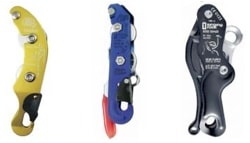 |
Brake Assist - Tube |
Weight (g)  Weight (g)In grams, the weight, as stated by the manufacturer/brand. |
105 g |
Belay Brake Assist  Belay Brake AssistThis is when the belay device significantly reduces the amount of holding power the belayer must exert to stop a fall and hold a climber. This is also called "assisted-braking" as the device must hold a significant amount of the climber’s weight; this term does not include friction-adding "teeth" found on some tube style belay devices. Confusingly referred to as “auto-blocking” or “auto-locking” these terms wrongly imply the device will always, automatically, stop a fall or hold a climber even if the belayer/rappeller is hands-free. These devices are not meant to be used without a hand on the braking side of the rope; the belayers/rapppeller brake hand should always be on the brake rope. Worth ConsideringMost of the mechanical brake assist devices only hold a single strand of rope and are not capable of double-strand rappelling (the most common method of rappel). |
Yes |
| Rope Options | 1 rope only |
Guide Mode  Guide ModeThis is when you belay directly off the anchor instead of your harness. Guide mode is helpful if you climb outdoors a lot because it reduces the holding power required from the belayer. When your partner falls or rests, the weight of the climber is held mostly by the anchor and the belay device. Tubers and PlatesWhen belaying in "guide mode," the tubers and plates turn auto-blocking. During a fall, the climbing rope pinches the slack rope, completely stopping the movement of either rope. A common guide mode setup shown below. 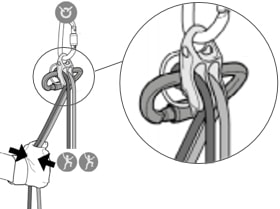
Mechanical Brake Assist DevicesThere is no difference in the functionality of the device. A brake-hand should always be on the rope to ensure the climber is caught in the case of a fall. A common guide mode setup shown below. 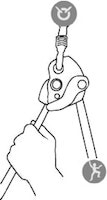
Where guide mode is used
Learn Morehttp://www.climbing.com/skill/essential-skills-auto-blocking-belay-devices/ |
No guide mode |
Teeth  TeethTeeth are only seen on tube devices. They add friction that helps grip the rope for more belaying control. This is helpful for belaying heavier climbers. Teeth are becoming standard on new tube devices. 
Worth ConsideringTeeth do wear out. You can limit wear by rappelling on the side without teeth (if you don’t need the extra friction). Once they’re worn, you’ll still have a usable belay device, just less friction. |
No |
Rope Range (mm)  Rope Range (mm)The range of rope diameters, in millimeters, that the manufacturer/brand specifies can safely be used. This is the best case scenario and does not necessarily take into consideration that certified ropes have a tolerance of +/- .3 mm. Recently, manufacturers have started to add an "optimized" rope range -- this is the range that will result in the nicest handling of the belay device. | 8.9 mm - 11.0 mm |
Certification  CertificationsThe main climbing gear certifications are CE and UIAA--and normally the UIAA creates the rules that the CE body also supports. When possible, we try to list all the certifications the product carries. To sell a climbing product in Europe, the device must be CE certified. There are no official requirements to sell climbing gear in the US. The UIAA certification is a voluntary process. Learn MoreRock and Ice Certifications Guide |
|
No reviews yet.
With its soft catch, the Jul 2 is a really nice forgiving indoor and sport climbing belay device that can be used on a wide range of rope diameters, from 8.9-11mm. For less experienced belayers it has an advantage over some of the more complex assisted braking devices with moving parts in that the key action, holding a fall, is basically the same as with standard belay devices, only with the added safety benefit of the assisted braking. There is a flipside to this however, which would be of particular disadvantage to less experienced belayers - that lowering action, which takes practise to get smooth. Lastly, there's the very fair price: I think you'd struggle to find an assisted braking belay device for less than £25.
Edelrid says this device was made for beginners, but any top-roping or single-pitch climber will enjoy the benefits. The Jul 2 provides a softer catch than most brake-assist devices, helps establish good belaying habits, and will last forever thanks to the steel core. And, since the handling is so similar to a tubular device, you’ll easily be able to switch between devices without needing to learn new techniques.
If you want a device for top-roping and single-pitch lead belaying, the Jul 2 is a fantastic choice that won’t break the bank.
In use I found the Jul² really easy to use, it offered plenty of assisted braking when mates were working routes. It must be noted though that the Jul² is not a hand free device (I always teach my clients that no belay device is hands free) and I did notice on a recent Dry Tooling day out with my 8.9mm alpine rope there was a little slippage through the device. Also it works best with a HMS screwgate carabiner. Since then, Edelrid stated that the Jul² is engineered to worked with the Bruce Steel FG screwgate as the steel to steel minimises wear and I’ve used it several times with the Bruce FG since. When I have used it I have noticed an improved performance, I have also used it with the HMS Strike Slider for a lighter weight option (as the steel was quite heavy, which is not an issue with sport climbing or cragging but I wouldn’t pack it for a mountain day, although it is lighter than a screwgate GriGri set up).
For gym climbing and sport cragging, we’ve found our new go-to belay device. With no moving parts and a wide range of rope diameters (8.9—11mm), the Jul provides assisted-braking capability that every tester lauded for its reliable and soft catch. This evolution of the successful Mega Jul (winner of our 2014 Editors’ Choice Award) is a single tube-style belay device designed for gym- and sport-focused climbers that works smoothly, even with the fatter ropes found at many gyms. For its diminutive size, a few testers said it felt heavy in the hand, but at 3.7 ounces, it’s comparable to many double-slot tubers (and half the weight of a Grigri 2). Plus, it’s made of stainless steel, which boosts durability into lifetime range.
What it is, how to use it, why it's different, how it compares/differs to the Jul2 version that never came out. Video was shot at the Outdoor Retailer trade show and features an Edelrid employee.
This video shows the original Jul2 concept. It was never released and Edelrid had made updates to the braking power of the Jul2 since then. We're showing it here because the concepts are very similar.

